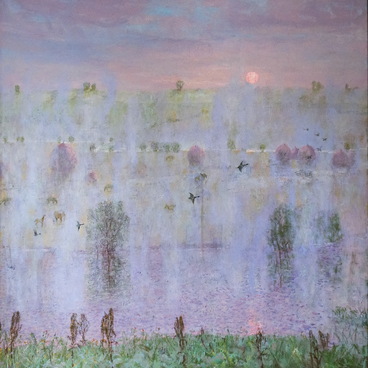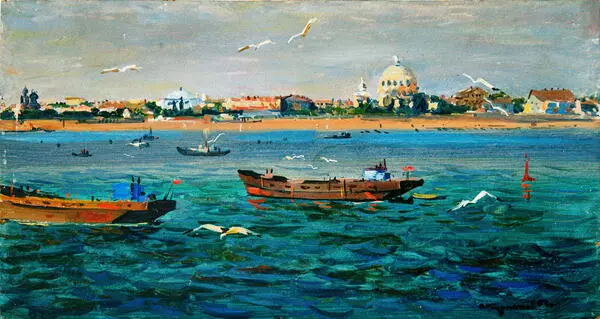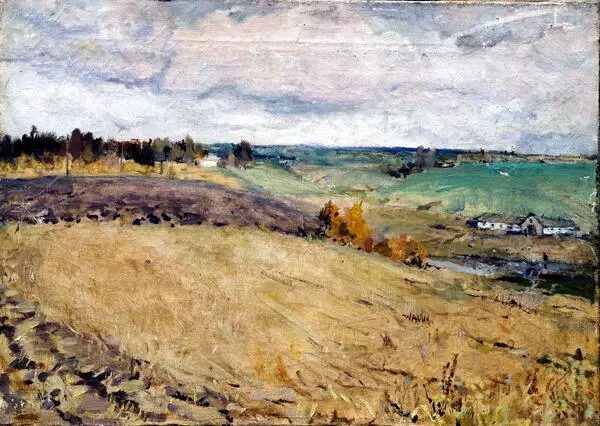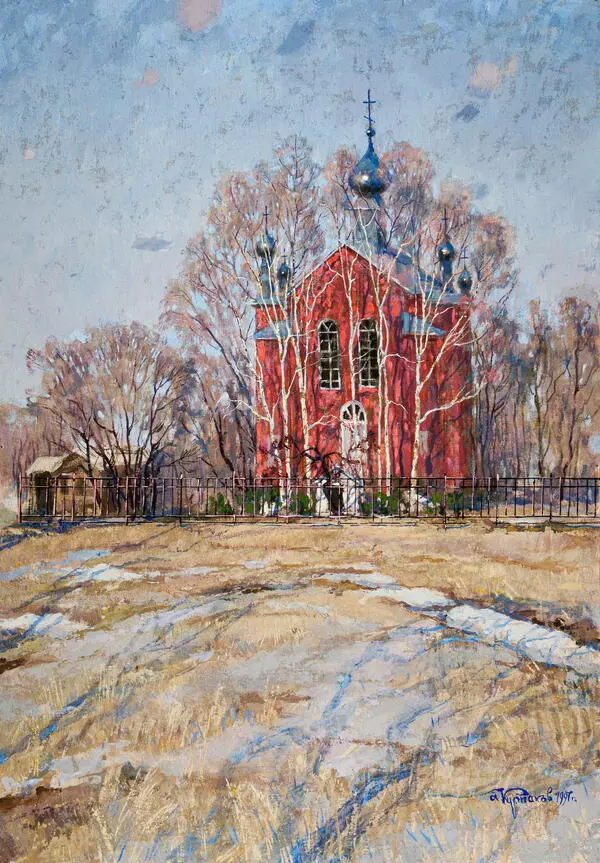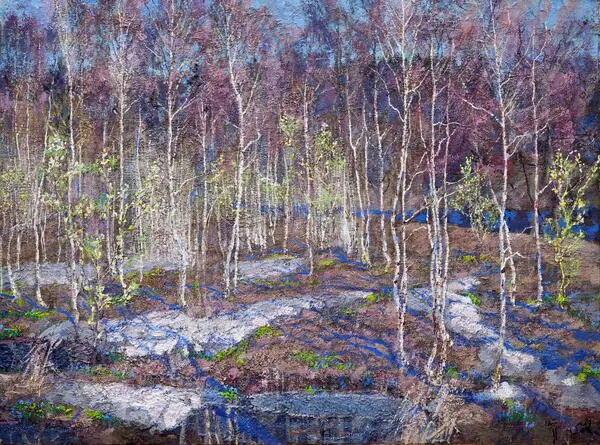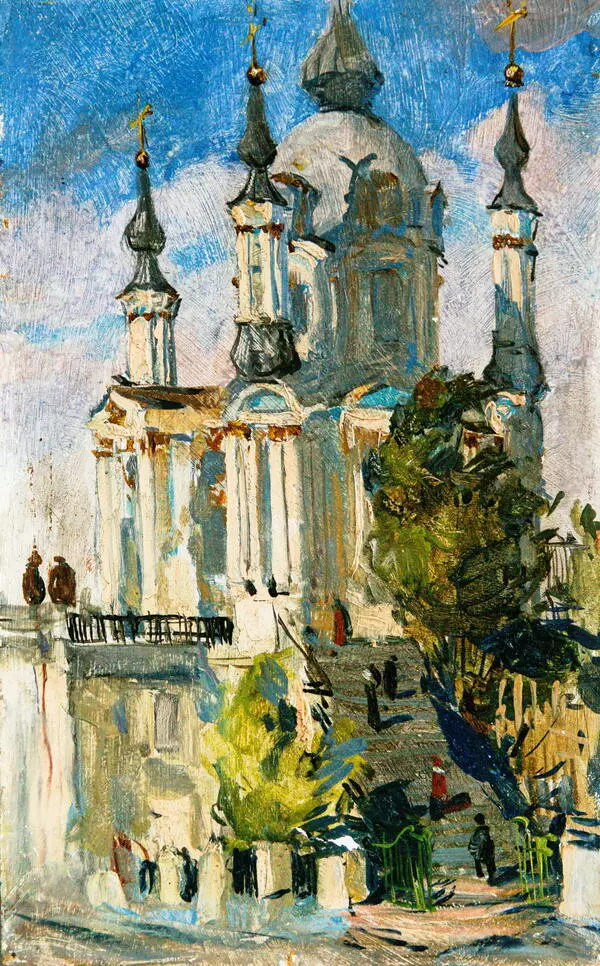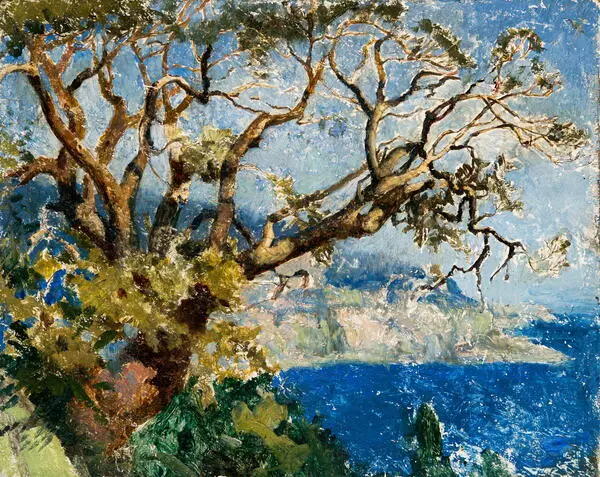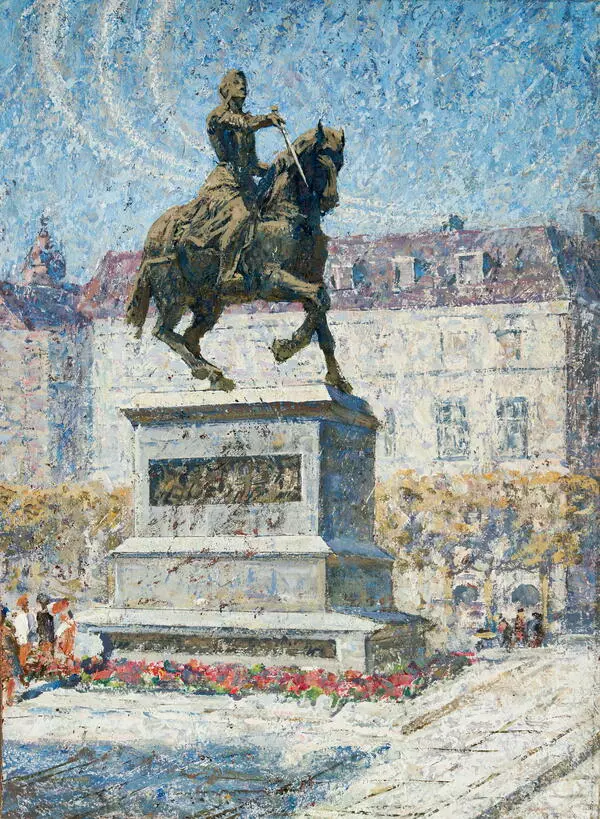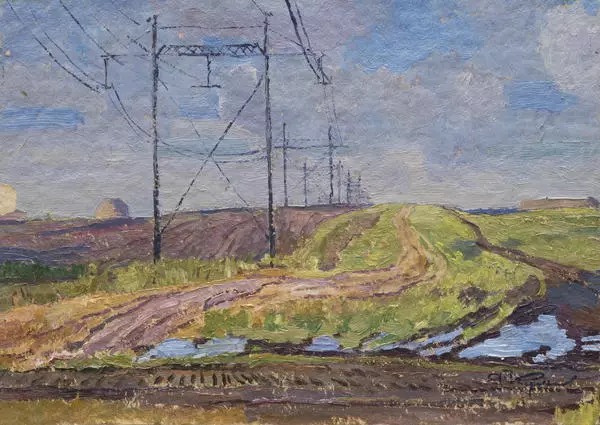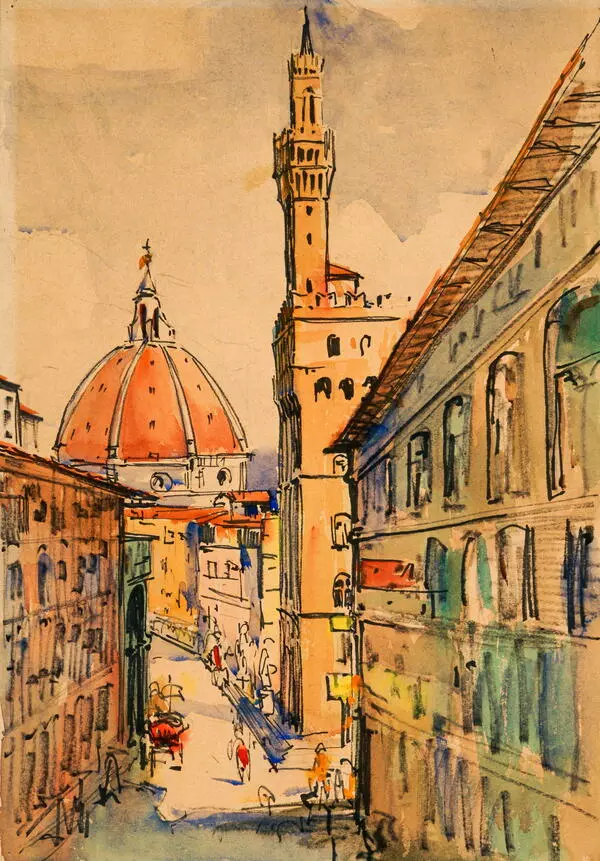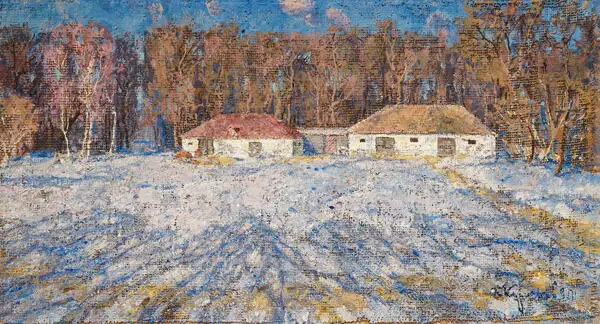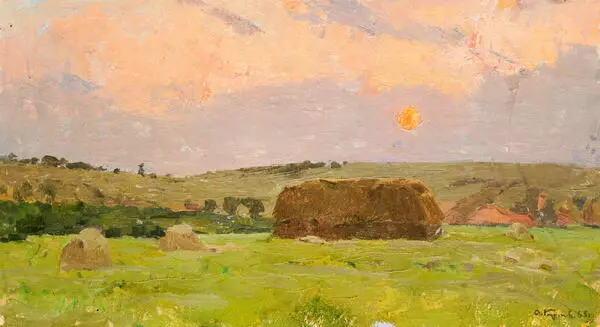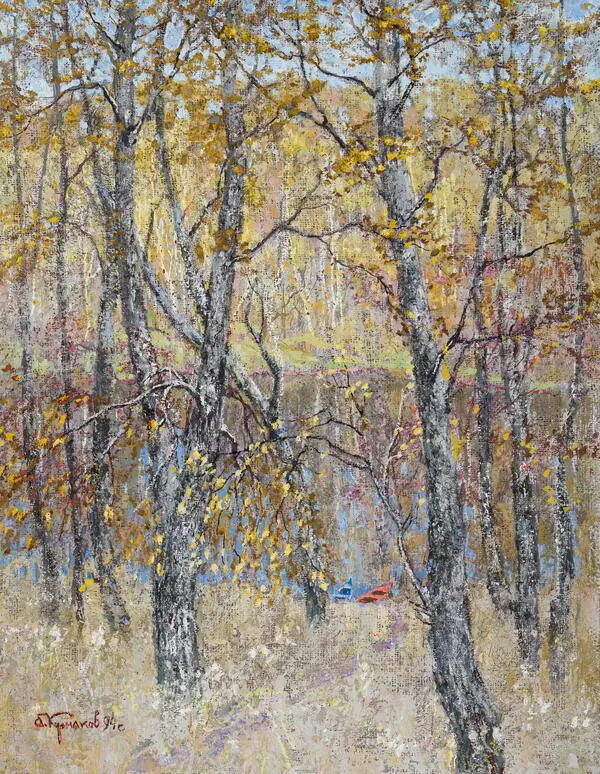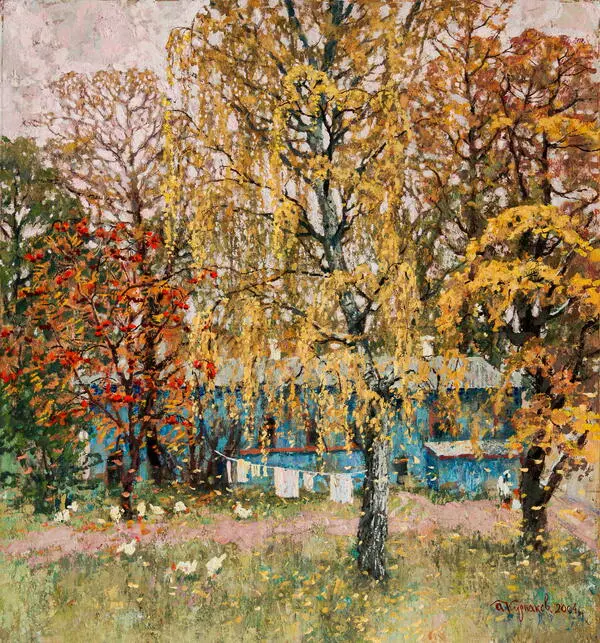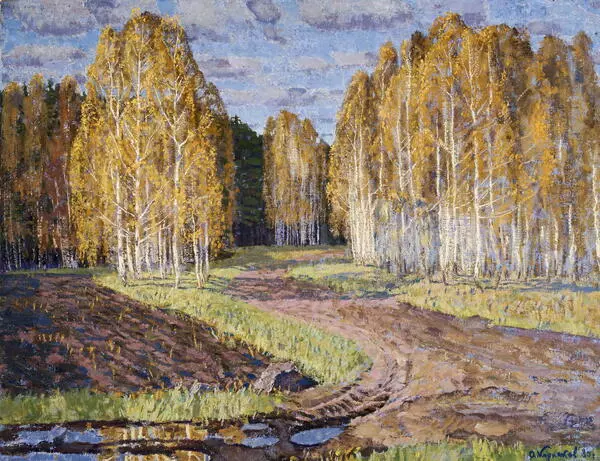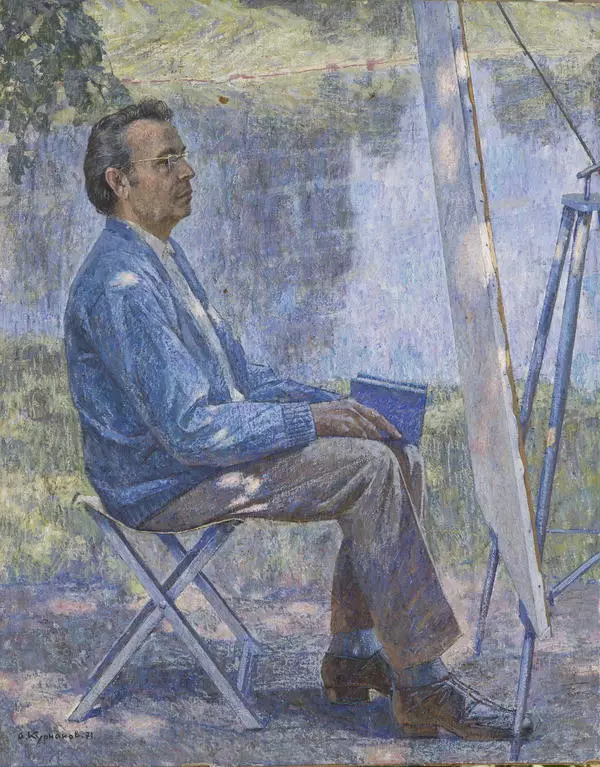Andrei Ilyich Kurnakov visited the Yaroslavl region and the city of Rostov the Great more than once. The centuries-old history of these places touched his feelings.
The village of Borisoglebsky, a small regional center of the Yaroslavl region, is situated among floodplain meadows in a wide bend of the once navigable river Ustye, 18 kilometers north of Rostov the Great. In the center of it, on a vast hill, stands the ancient monastery-fortress - Borisoglebskiy, or Borisoglebskiy on Ustye, as it was called in the old days. Over the centuries of the Mongol Yoke, a generation of people grew up in Russia, in whose hearts there was no longer that fear of the conquerors that accompanied the lives of several generations of their predecessors. People were ready to stand up for their freedom. Erected in the middle of the 14th century to oppose the Golden Horde, it was not just a monastery, but a truly mighty fortress. The appearance of the monastery shaped in the pre-Petrine era and practically has not changed since the 17th century.
Probably, it was this power that attracted the artist. In front of us is an architectural landscape, which is not uncommon for Andrei Ilyich. The work was created in a single burst, without elaboration of individual details. Broad brush strokes convey austere simplicity and inaccessibility. The pinkish walls of the tower in the foreground and the churches to the left in the back, the high blue sky with grayish-pinkish clouds do not deflate the formidable structure.
There is a lot of blue in the canvas. It’s not just the blue of the sky in the background. In the foreground is red trampled earth, and then blue again. It dominates the coloration of the mighty fortress wall; its dark blue shadow lies on the ground. The artist splits the foreground with blue-lilac shadows from young trees, windingly weaving their unique lace. This blue gives the picture air, but does not make it transparent, light.
The artist found the monastery at the time of its restoration. In subtle strokes he denotes the yellowish formwork planks on the outermost tower on the left, scaffolds around the orange-red domes of the temple in the back. The monastery lives, it is restored, it keeps its historical memory.
The village of Borisoglebsky, a small regional center of the Yaroslavl region, is situated among floodplain meadows in a wide bend of the once navigable river Ustye, 18 kilometers north of Rostov the Great. In the center of it, on a vast hill, stands the ancient monastery-fortress - Borisoglebskiy, or Borisoglebskiy on Ustye, as it was called in the old days. Over the centuries of the Mongol Yoke, a generation of people grew up in Russia, in whose hearts there was no longer that fear of the conquerors that accompanied the lives of several generations of their predecessors. People were ready to stand up for their freedom. Erected in the middle of the 14th century to oppose the Golden Horde, it was not just a monastery, but a truly mighty fortress. The appearance of the monastery shaped in the pre-Petrine era and practically has not changed since the 17th century.
Probably, it was this power that attracted the artist. In front of us is an architectural landscape, which is not uncommon for Andrei Ilyich. The work was created in a single burst, without elaboration of individual details. Broad brush strokes convey austere simplicity and inaccessibility. The pinkish walls of the tower in the foreground and the churches to the left in the back, the high blue sky with grayish-pinkish clouds do not deflate the formidable structure.
There is a lot of blue in the canvas. It’s not just the blue of the sky in the background. In the foreground is red trampled earth, and then blue again. It dominates the coloration of the mighty fortress wall; its dark blue shadow lies on the ground. The artist splits the foreground with blue-lilac shadows from young trees, windingly weaving their unique lace. This blue gives the picture air, but does not make it transparent, light.
The artist found the monastery at the time of its restoration. In subtle strokes he denotes the yellowish formwork planks on the outermost tower on the left, scaffolds around the orange-red domes of the temple in the back. The monastery lives, it is restored, it keeps its historical memory.
